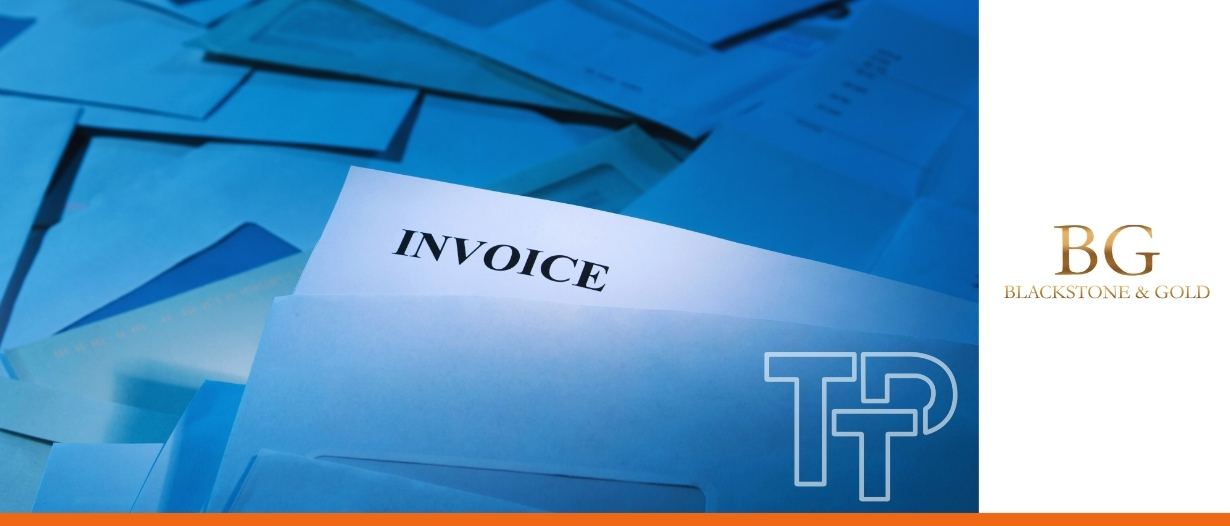New York adopts UCC Article 12, modernising law for digital asset transfers and electronic records
Deepesh Patel
Jun 12, 2025
 Baldev Bhinder
Jun 10, 2025
Baldev Bhinder
Jun 10, 2025

The recent collapse of invoice financing company Stenn, once valued at close to 1 billion dollars, in the wake of allegations of fictitious trades have once again put the spotlight on the business of invoice financing. A traditional form of financing to unlock capital by selling receivables, the asset class has long attracted investors on the promise of a low-risk return. However in the chase for top line revenue, invoice financiers remain vulnerable to fictitious or fraudulent invoices.
The case of Stenn puts the focus on the invoice financier itself and the risk that it may be funding fictitious invoices unwittingly, recklessly, or more worryingly, with the knowledge of the invoice funder. In a world of panacea algorithms to process invoices and the race for inflated valuations of invoice financing businesses, is it the case of one step forward but two steps back for this asset class?
The business of invoice financing, where a financier, pays a supplier a discounted portion of its receivables today, and collects the full value of the invoice from the buyer on its due date, has long been a means of generating working capital. In recent years, this business has seen explosive growth as SMEs unable to get access to traditional banking facilities have turned to selling their invoices. Increasing regulatory challenges on deployment of capital, know your customer protocols, coupled with the manpower needed to monitor invoice financing programs, meant that nimbler invoice financing companies like Stenn and Greensill could disrupt the marketplace leveraging on algorithms and tech solutions to onboard, assess risk and deploy funding in days.
Banks, once direct lenders in invoices financing programs have increasingly repositioned themselves as investors in such companies, pumping substantial sums of capital into these companies as their valuations skyrocketed. But in the euphoria of steroidal growth, the foundations of invoice financing might be overlooked: understanding trade and trade fraud.
Invoice financing is predicated on volume which might make detecting trade fraud an exercise in finding a need in a haystack. This is further compounded by how invoice financiers are staffed, while banks had teams of experienced operational staff in their trade finance teams, invoice financiers are more likely to be smaller in size, positioning their tech, rather than their knowledge of trade. Algorithms might help with data processing and assessment of financial statements, but they do little to tackle the dynamic menace of trade fraud where invoices can be impersonated, inflated or simply fabricated.
As experts in trade fraud, we have seen different permutations including an invoice from a buyer that does not exist, or an invoice imitating or impersonating a company that exists but did not actually purchase any goods relating to the invoice purchased by the funder. Then there are traders who might be engaged in a merry go round of invoices with “friendly” companies acknowledging debts on paper with the promise behind the scenes, that these “debtors” would only have to pay when they are paid by the sub-buyer conveniently installed by the seller to create a circle of invoices. But there is also the more insidious practice of creating a web of companies to give the appearance of arms’ length trades when in fact it is simply a fiction created to generate invoices to be sold to a funder. The ultimate goal of all of these schemes might not necessarily be to rob the financier of funds but instead to illegitimately get access to liquidity by imitating trades and creating the appearance of receivables that can be monetized.
The reason why these schemes can flourish is because trade is represented by documents that can be easily manufactured or imitated, for example by using photocopy bills of lading as evidence of shipment of goods. They go undetected in part because by paying back on fictitious trades, unscrupulous actors are able to get access to even greater sums of liquidity while the financiers are able to boast staggering revenue numbers, which in turn increases valuations and further investment. When interests are aligned, the need for a critical eye and robust processes might not be necessary, particularly if defaults remain low on paper.
But from experience, that is the nature of trade fraud – it is insidious and might be thriving even in plain sight. Invoice financiers act as gatekeepers of their portfolios of invoices financed, which can be supercharged by wrapping it by credit insurance and securitizing the portfolio into an attractive investment product. But who polices the gatekeeper?
The allegations ensuing from Stenn’s collapse, revolve around a portion of their portfolio of invoices of suppliers actually being fictitious as buyers have disavowed knowledge of these invoices. The use of fictitious invoices between companies that have never traded with each other, have similar hallmarks to the allegations that plagued another posterchild of invoice financing, Greensill.
The practical upshot of these allegations is worth bearing in mind: it would mean that monies were disbursed to the suppliers by Stenn for purchase of their invoices and Stenn received payment from the alleged buyers at the time of the due date. If monies were moving but there was no real trade, what emerges would probably be a Ponzi scheme, where cash is recycled to give the appearance of continuously increasing revenue.
Stenn’s undoing was fortuitous. It appears that one of its investors started probing for an unrelated reason which ultimately led to the discovery that some of Stenn’s portfolio with key counterparties might involve alleged fictitious invoices. The suggestion that fake trades went undetected by a long line of investors, advisors and auditors brings into sharp focus the perils of invoice financing and the seduction of growth stories built on a nebulous concept of tech rather than a firm grounding in trade.
Without visibility of the physical goods, unscrupulous traders looking to benefit from easy financing, can manufacture their paperwork to fit the requirements of an invoice financing business. Without robust due-diligence, circular or fictitious trades designed to channel money between related parties might not be spotted. The lack of transparency of these and other issues, only gets compounded, when more layers of securitization are added, with each layer adding further distance between the invoice and the investor.
This is all the more acute if the gatekeeper is given the liberty to decide what goes into the portfolio within some broad guidelines, which may incentivize, the creation of a hodgepodge of invoices within the portfolio – obligors with different credit ratings, over-concentration of invoices of one particular obligor and in extreme cases, the creation of invoices for goods that have not been contracted for or delivered.
The case once again brings into the issue the question of regulatory oversight of the gatekeeper and how well placed a tech company is to detect trade fraud. As matters stand, investors should take a more pro-active approach on the robustness of the business and its processes, instead of waiting for the fruit flies to appear.

Deepesh Patel
Jun 12, 2025

Vincent Chin-Hsiang Yao
Jun 11, 2025
Trade Treasury Payments is the trading name of Trade & Transaction Finance Media Services Ltd (company number: 16228111), incorporated in England and Wales, at 34-35 Clarges St, London W1J 7EJ. TTP is registered as a Data Controller under the ICO: ZB882947. VAT Number: 485 4500 78.
© 2025 Trade Treasury Payments. All Rights Reserved.